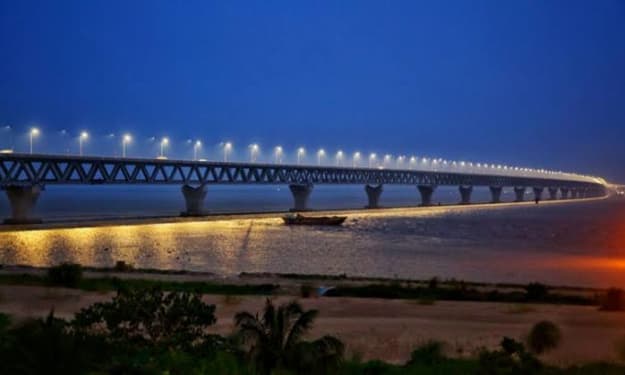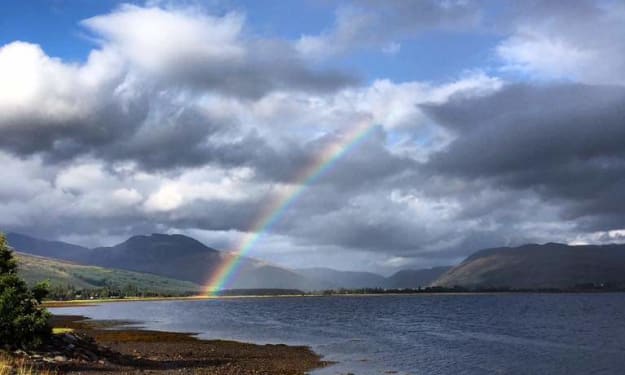Padma River: The Lifeline of Bangladesh
Padma River

The Padma River, known as the Ganges in India and the Jamuna in Bangladesh, is a river of great significance, not only in the context of the Indian subcontinent but especially for the people of Bangladesh. It is not just a river; it is a lifeline, a source of livelihood, a symbol of culture, and a force of nature that shapes the very essence of the country.
**1. Origin and Course**
The Padma River originates from the Gangotri Glacier in the Indian state of Uttarakhand, flowing through northern India before entering Bangladesh. The river is formed by the confluence of the Bhagirathi and Alaknanda rivers in the Indian state of Uttarakhand. After crossing the Indian border, it flows through Bangladesh for over 150 miles before joining the Meghna River, which eventually empties into the Bay of Bengal.
**2. Size and Characteristics**
The Padma River is one of the major rivers in the Indian subcontinent, measuring around 120 kilometers (75 miles) at its widest point. Its flow is highly seasonal, with water levels rising dramatically during the monsoon season, often leading to floods in low-lying areas of Bangladesh. During the dry season, the river's waters recede significantly, exposing vast sandy riverbanks.
**3. Historical Significance**
Historically, the Padma River has played a central role in the development of the region. In ancient times, the river served as a key trade route for the exchange of goods and culture between the Indian subcontinent and Southeast Asia. The riverbanks witnessed the rise and fall of empires and the flourishing of art and culture.
**4. Agriculture and Livelihood**
The Padma River's influence on agriculture in Bangladesh is immeasurable. Its annual floods bring fertile silt and nutrients to the plains, making the land exceptionally arable. These fertile plains are where a significant portion of the country's rice, the staple food of the Bangladeshi people, is cultivated. Farmers along the riverbanks rely on the annual floodwaters to irrigate their crops, making the Padma the lifeline of their livelihoods.
**5. Fishing and Aquatic Life**
The river is not just about agriculture; it is a rich source of aquatic life. The Padma River and its tributaries provide habitat to countless species of fish and other aquatic organisms. Fishing is a primary occupation for many communities living near the river. The rich biodiversity of the river also supports the freshwater dolphin population, including the endangered Ganges River Dolphin.
**6. Transportation and Connectivity**
Throughout history, the Padma River has been a vital means of transportation in the region. Even today, it serves as a major transportation route for goods and people. Boats and ferries are commonplace, connecting remote villages to larger towns and cities. The Padma River's importance in this regard cannot be overstated, as it provides access to areas that are otherwise challenging to reach due to the region's complex network of rivers and waterways.
**7. Cultural Significance**
The Padma River holds a special place in the hearts of the Bangladeshi people. It is deeply woven into the country's cultural fabric. The river and its surroundings have inspired countless works of literature, poetry, music, and art. It is also a central element in local folklore and traditions. The river has a way of bringing people together, and many religious and cultural festivals are celebrated on its banks.
**8. Challenges and Threats**
While the Padma River is a source of life and livelihood for millions, it is not without its challenges. The seasonal floods, while important for agriculture, can also bring devastation to the region. Flash floods and erosion of riverbanks result in loss of property, displacement, and even loss of lives. Climate change has intensified these challenges, leading to more erratic weather patterns and unpredictable flood cycles.
Additionally, industrial pollution and agricultural runoff have posed threats to the river's water quality. The once pristine river is now struggling with contamination, affecting both aquatic life and human communities that depend on it.
**9. Conservation Efforts**
In response to the challenges facing the Padma River, both the government of Bangladesh and various non-governmental organizations (NGOs) have initiated conservation and management efforts. These include riverbank erosion control measures, afforestation projects, and water quality monitoring. Steps are being taken to raise awareness among local communities about sustainable practices and the importance of preserving the river's health.
**10. The Padma Bridge Project**
One of the most ambitious and significant infrastructure projects related to the Padma River is the Padma Bridge. This multipurpose bridge will connect the southwestern region of Bangladesh to the capital, Dhaka, and the rest of the country. The bridge is expected to facilitate transportation and trade, making it a vital component of the country's development and economic growth. However, the project has also faced controversies and environmental concerns, highlighting the complex balance between development and environmental preservation.
**11. Conclusion**
The Padma River is not just a geographical feature; it is a testament to the interdependence of nature and human civilization. It sustains life, provides livelihoods, connects communities, and shapes culture. Its waters have witnessed the rise and fall of dynasties and the ebb and flow of history. The challenges it faces today reflect the broader environmental issues confronting our planet. The people of Bangladesh hold a deep reverence for the Padma River, understanding its value as a lifeline. As we move forward, it is vital that we protect and preserve this remarkable natural wonder and ensure it continues to enrich the lives of generations to come.
About the Creator
Enjoyed the story? Support the Creator.
Subscribe for free to receive all their stories in your feed. You could also pledge your support or give them a one-off tip, letting them know you appreciate their work.





Comments
There are no comments for this story
Be the first to respond and start the conversation.